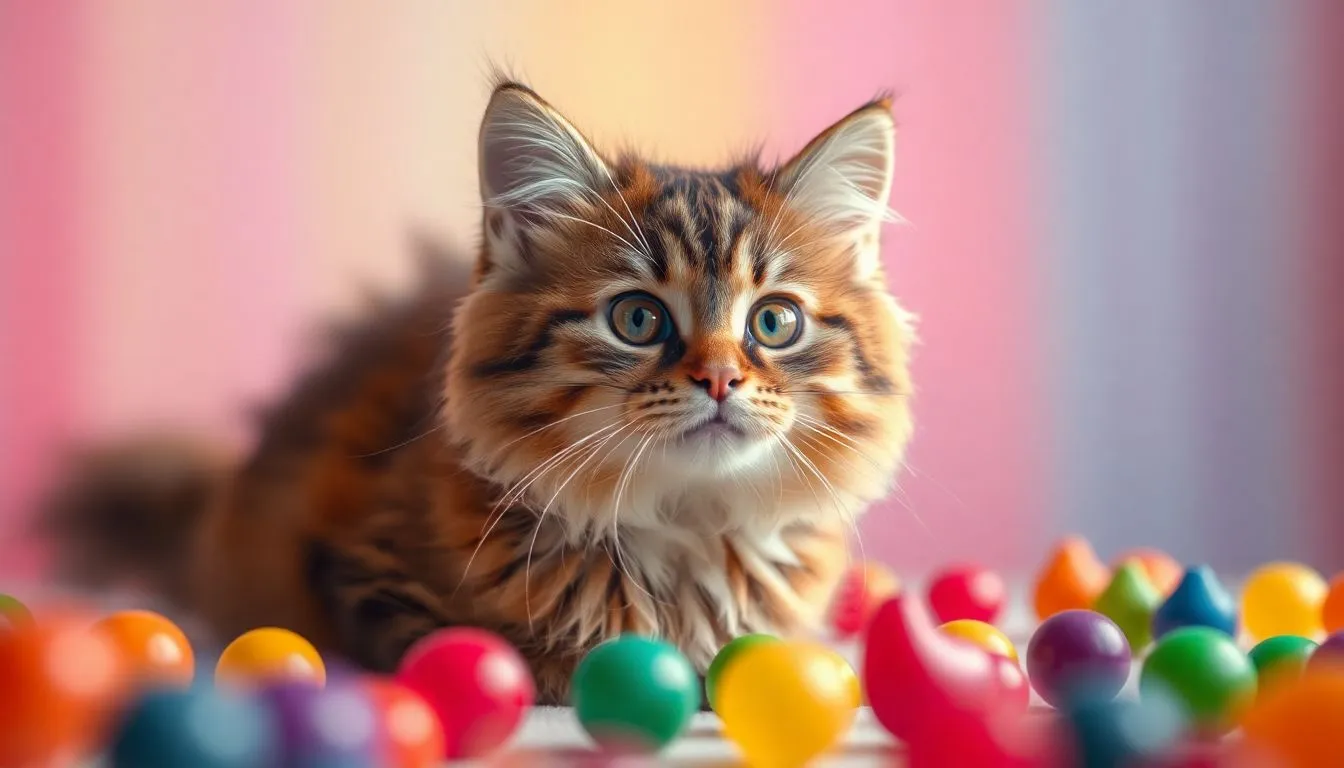What Colors Can Cats See? A Comprehensive Guide to Feline Vision

Ever watched your cat chase after a toy, seemingly oblivious to its color? You might wonder what goes on in their minds. The mystery of a cat’s color perception is intriguing. Unlike humans, cats perceive their world in a different spectrum. This article will explore the science behind feline color vision, detailing what colors they can and cannot see, and how this impacts their daily lives.
The Science Behind Cat Color Vision
Dichromatic Vision vs. Trichromatic Vision
Humans are trichromatic, meaning we see three primary colors: red, blue, and green. In contrast, cats are dichromatic. This means they mainly perceive two colors, primarily blue and yellow. Research shows that about 25% of mammals, including cats, fall into the dichromatic category. This visual capability limits the range of colors they can distinguish.
The Role of Photoreceptor Cells
Cat eyes have two types of photoreceptor cells: rods and cones.
- Rods help with low-light vision, allowing cats to see in dim environments.
- Cones enable color perception. Cats have fewer cones than humans, especially those sensitive to red light.
This unique setup allows them to excel in night vision while having a limited color palette.
Comparing Cat and Human Vision
| Color Range | Humans | Cats |
|---|---|---|
| Blue | See clearly | Strongly aware |
| Green | See clearly | Can distinguish |
| Yellow | See clearly | Can distinguish |
| Red | See clearly | Difficult to see |
| Orange | See clearly | Difficult to see |
Colors Cats Can See: Shades of the Feline World
Shades of Gray and Blue
Cats are particularly sensitive to blue hues. This sensitivity helps them hunt and navigate effectively in a variety of settings. For instance, a bright blue toy might catch their attention more than a red one, making playtime more interactive and exciting.
Green and Yellow Hues
Cats can distinguish several shades of green and yellow, but their perception isn’t as vivid as humans. Research has shown they can be attracted to these colors, which may influence their choice of toys and even their interactions with plants.
The Limitations
While cats can see some colors, they struggle to perceive reds and oranges. This limitation means they miss out on many colors visible to humans, making their world appear less vibrant.
Colors Cats Cannot See: The Invisible Spectrum
Red and Orange
Cats can’t easily distinguish red and orange hues due to their cone makeup. Their ability to perceive wavelengths falls short compared to humans. For example, while humans can see colors up to around 700 nm, cats only perceive up to about 560 nm. This difference explains why that bright red ball doesn’t seem as appealing to them.
The Impact on Toy Selection
Understanding a cat’s color perception can enhance playtime. When selecting toys, opt for shades like blue or yellow to capture their interest. Patterns, instead of solid colors, may also stimulate their curiosity.
Color Perception and Hunting
Limited color vision impacts how cats hunt. They rely more on movement and contrasts rather than color. Their exceptional night vision enables them to detect prey efficiently, even under low light conditions.
How Cat Vision Impacts Their Behavior
Prey Detection
Even with restricted color perception, cats excel at detecting prey. Their strong night vision and focus on movement allow them to hunt successfully. This advantage helps them thrive in their environment.
Environmental Interactions
A cat’s color perception shapes how they interact with their surroundings. They may navigate spaces differently, often relying on shapes and movements more than colors to identify objects or obstacles.
Social Interactions
Cats also interact with fellow felines and humans based on visual cues. While they may not see some colors vividly, other aspects like body language and scent play a critical role in their social dynamics.
Enhancing Cat Enrichment Through Understanding Color Vision
Toy Selection Strategies
When purchasing toys, select options in blues and yellows. Striped or patterned toys can also capture their attention more efficiently than solid colors. Simple designs may attract them, aiding in mental stimulation.
Environmental Design
Create spaces for your cat that consider their unique visual strengths. Use patterns and textures that are visually engaging, even if color choices are limited. This can keep them content and mentally active.
Training and Play
When engaging in training or playtime, focus on toys that move or make noise. Rapid movements capture a cat’s attention, making the experience more rewarding for them.
Conclusion
Understanding cat color vision is crucial for enhancing their daily lives. By recognizing what colors cats can see, we can provide enriched environments and engaging play experiences. This knowledge fosters better care and a stronger bond with our feline friends. Keep exploring the fascinating world of feline perception for a deeper appreciation of your pet’s unique view of the world.
References- What colors can cat see? – Quora





